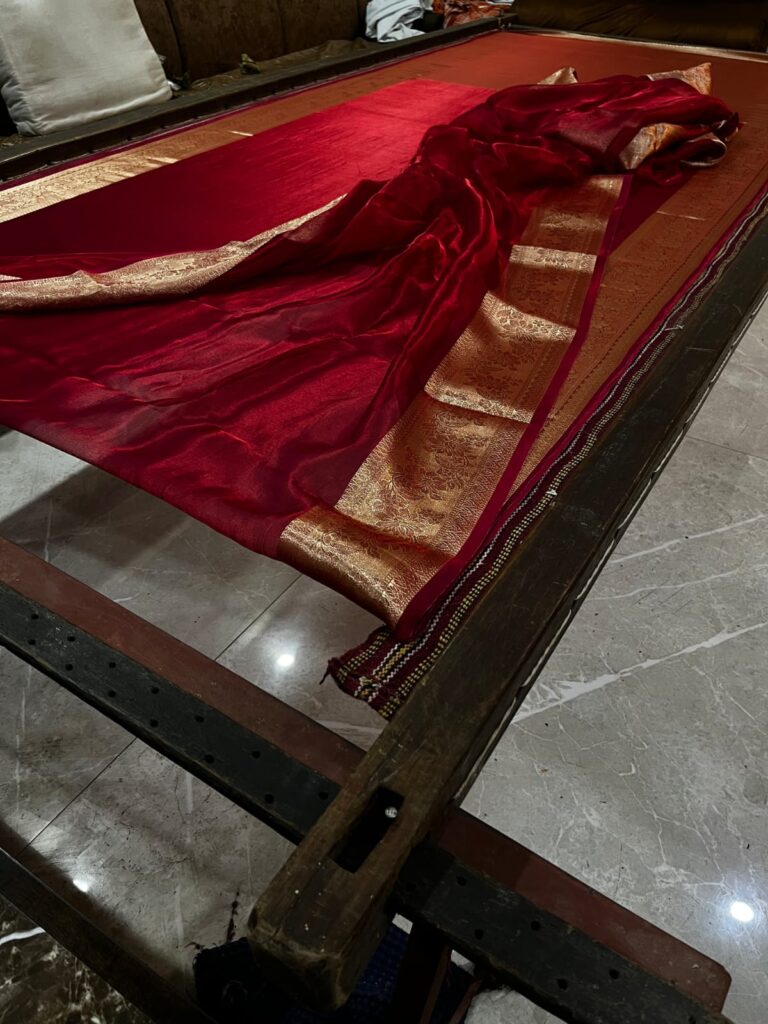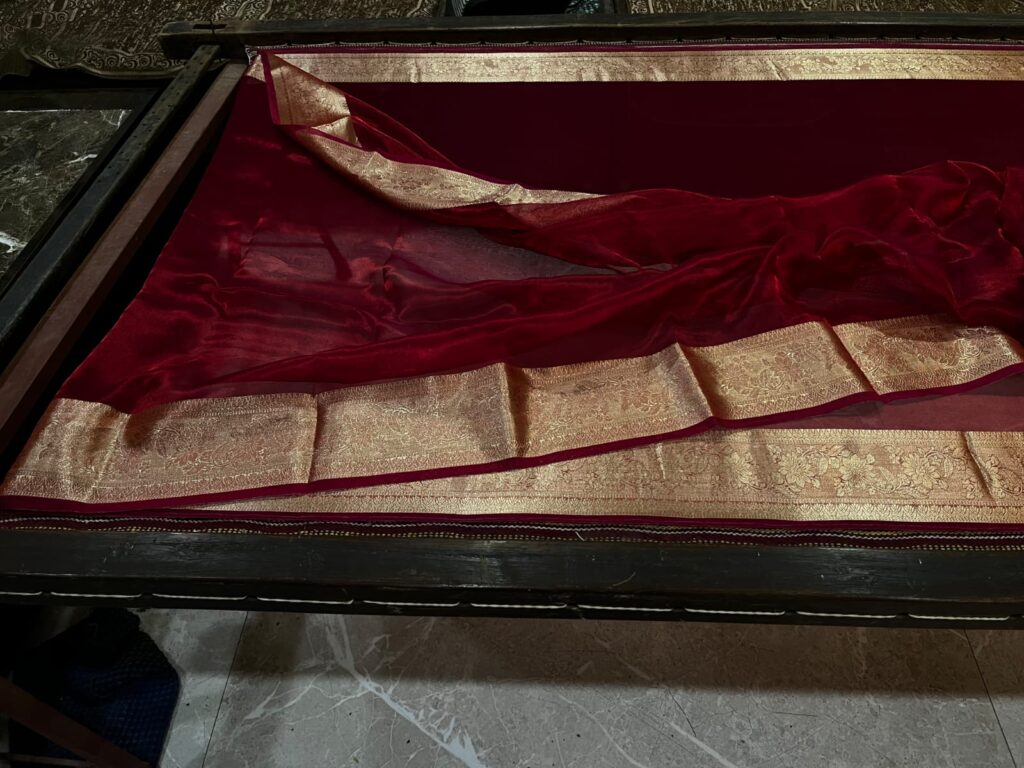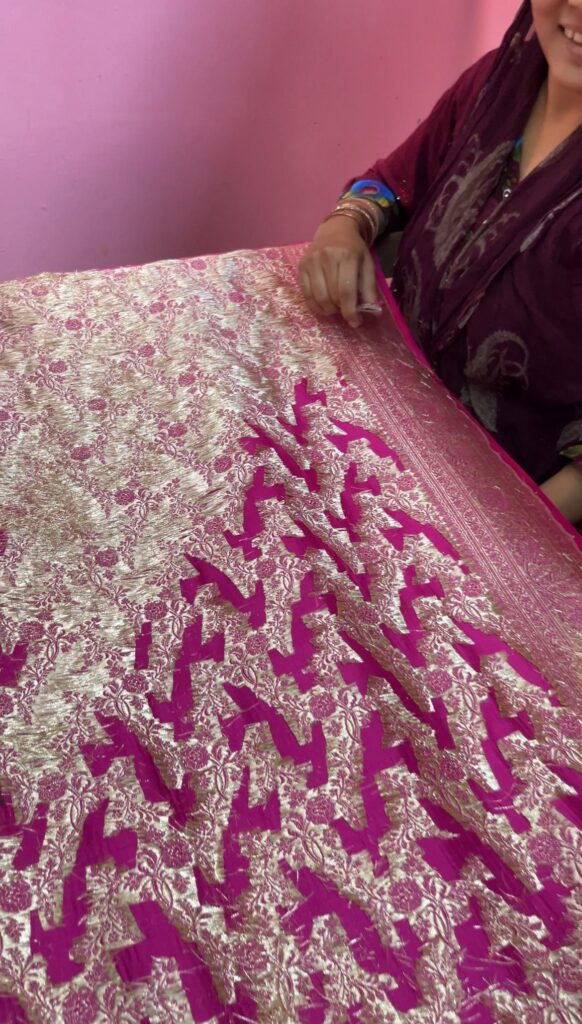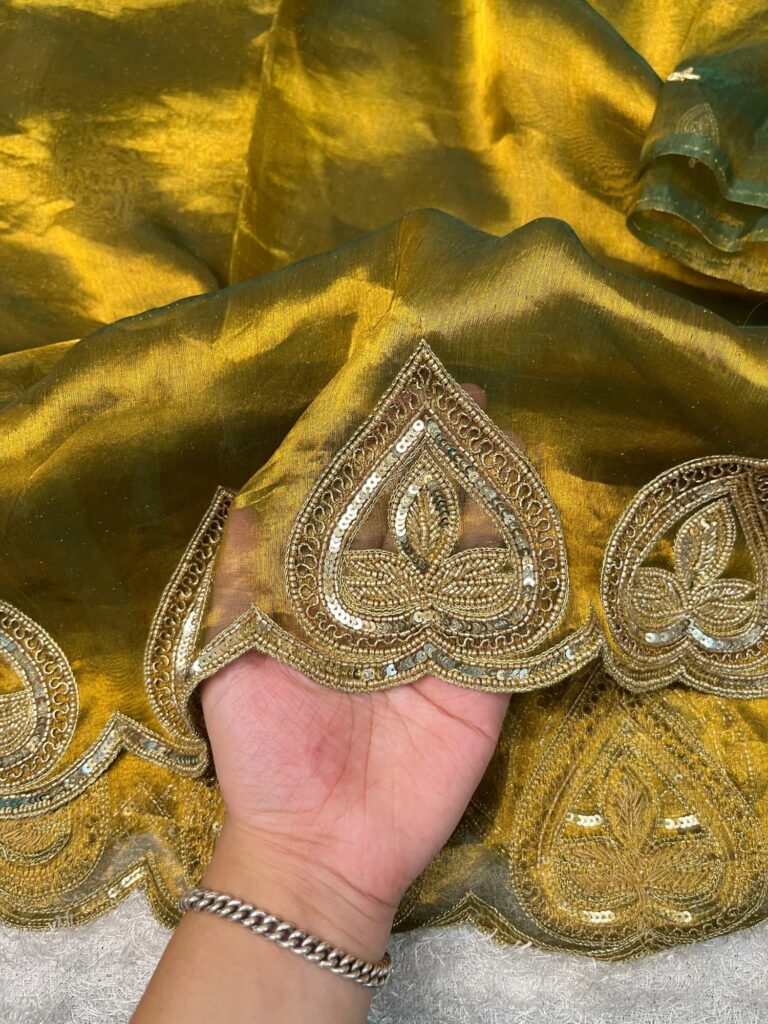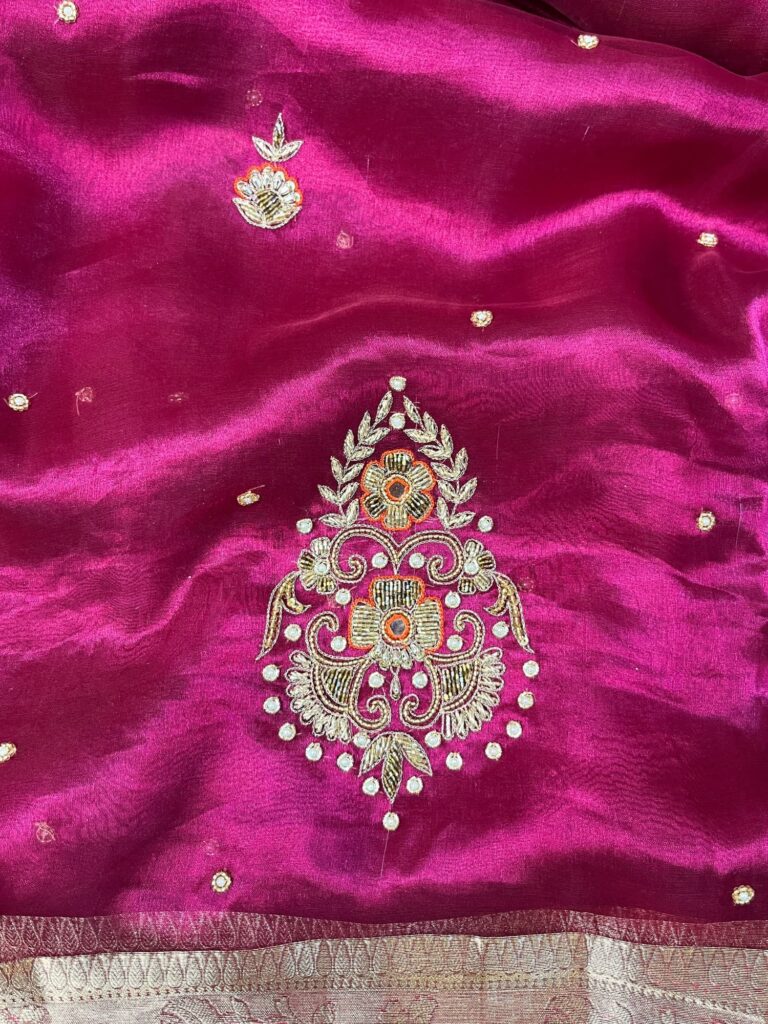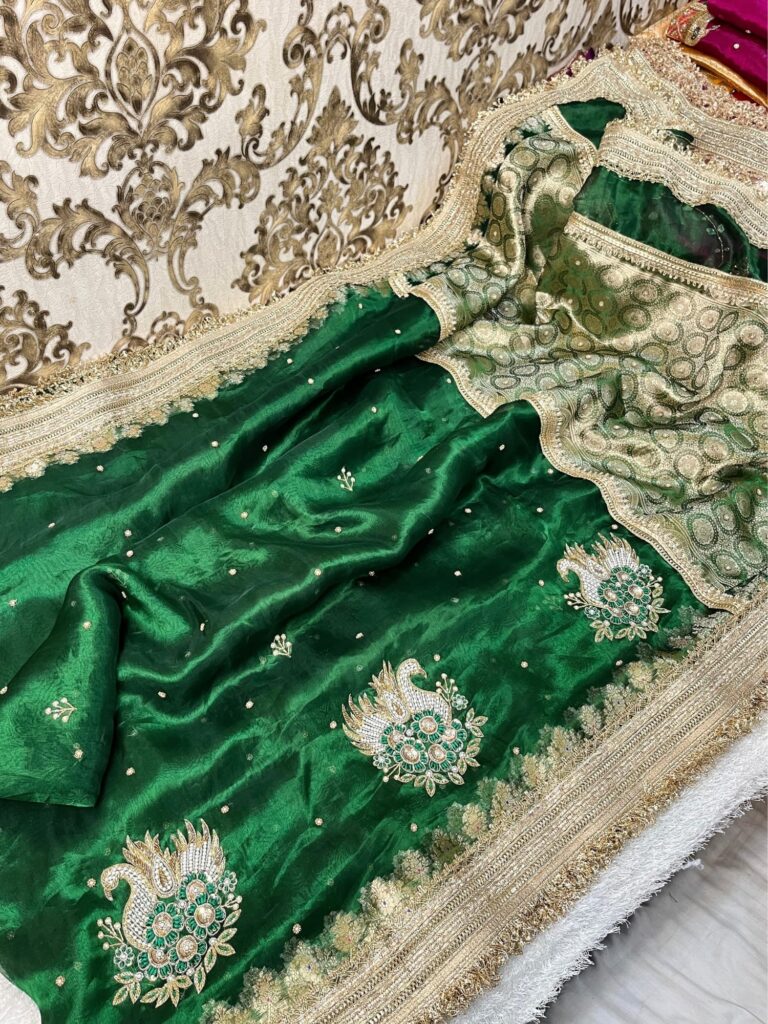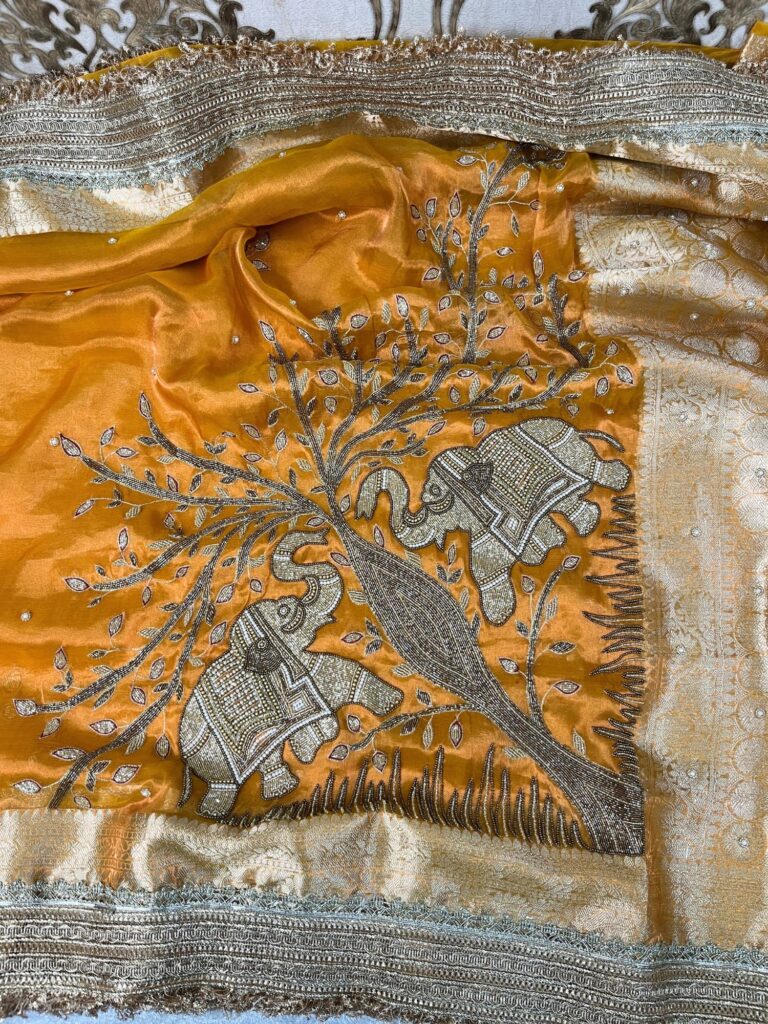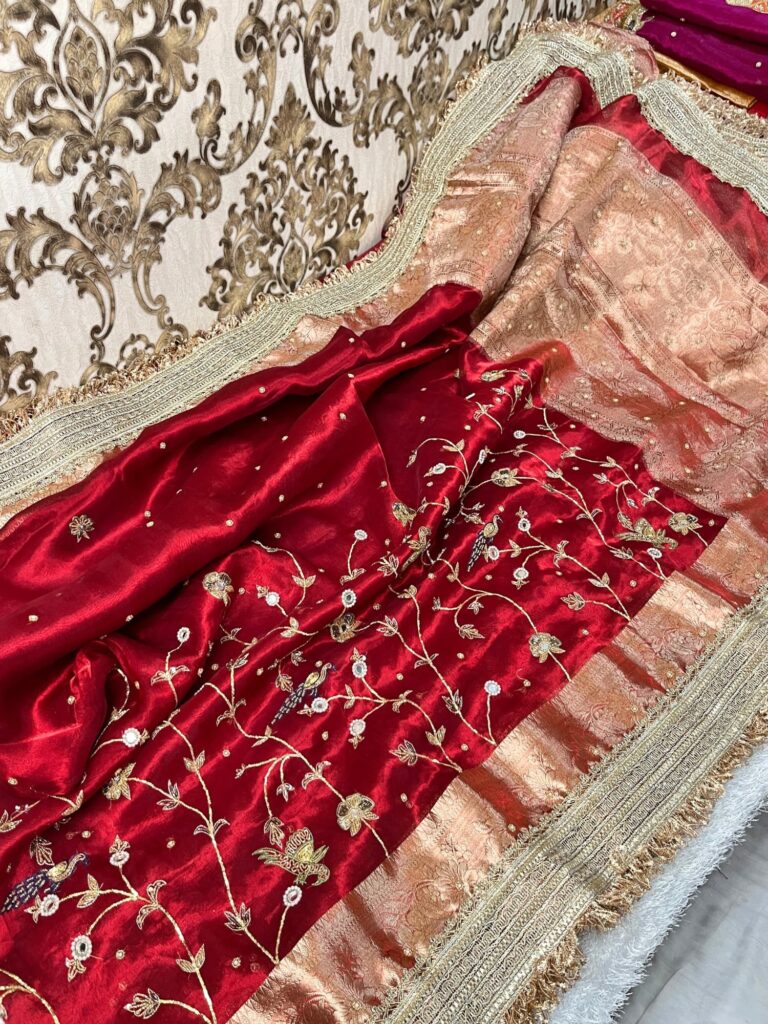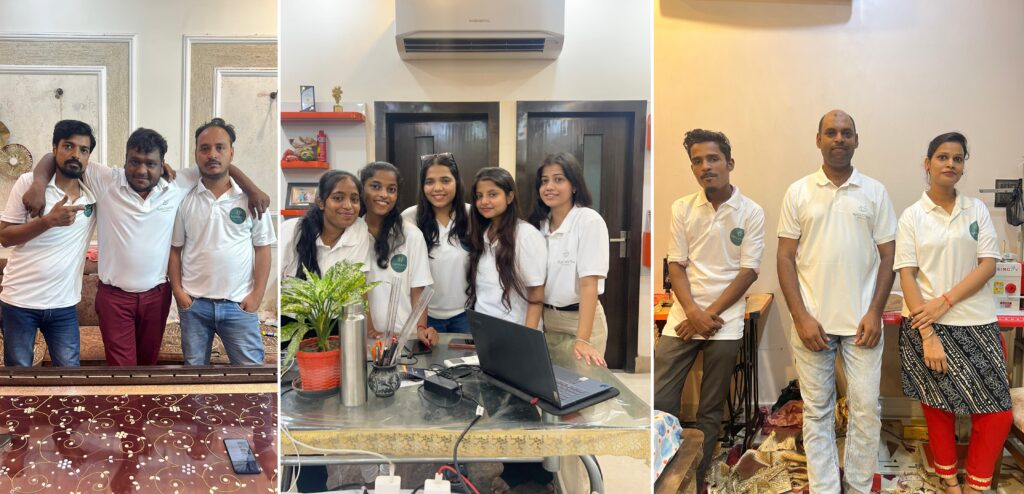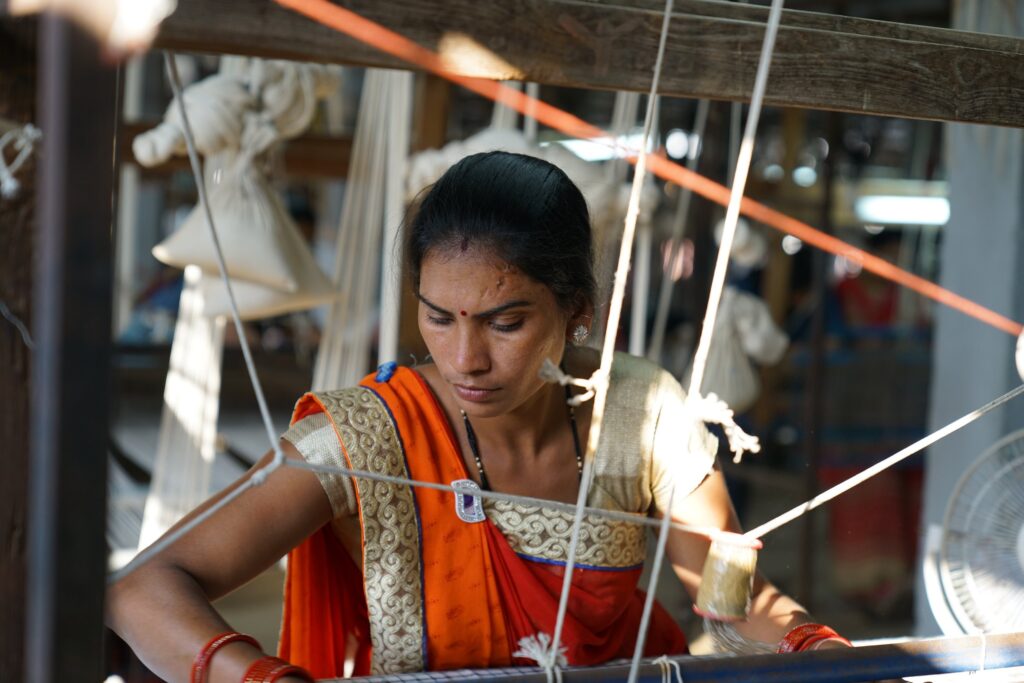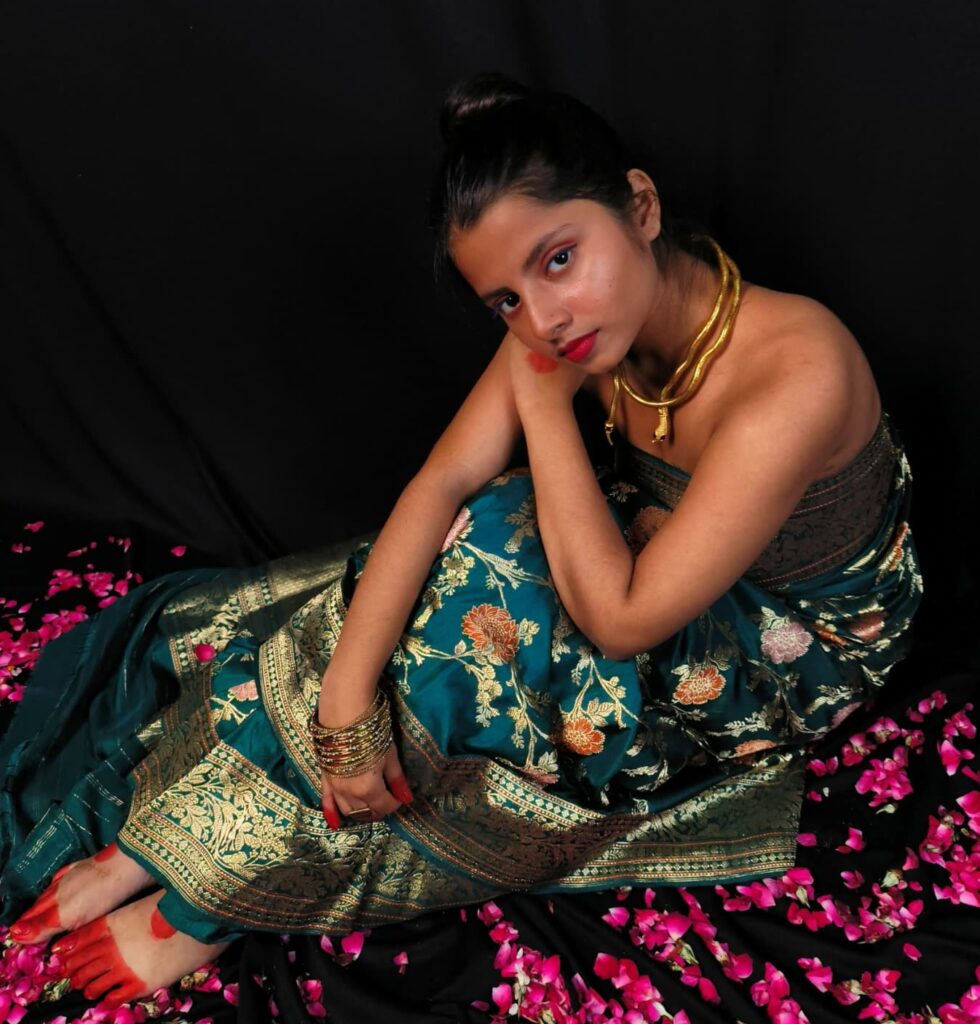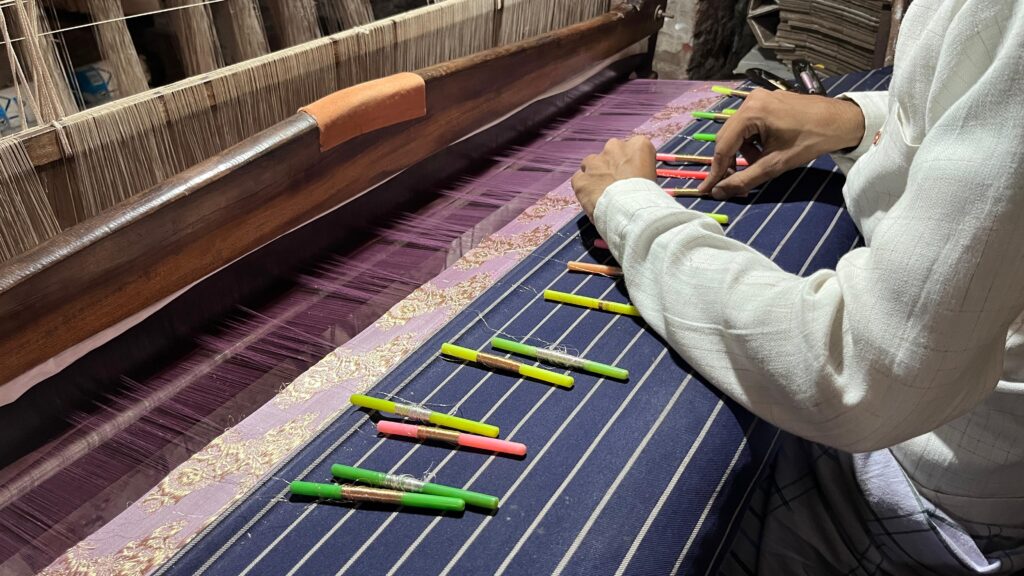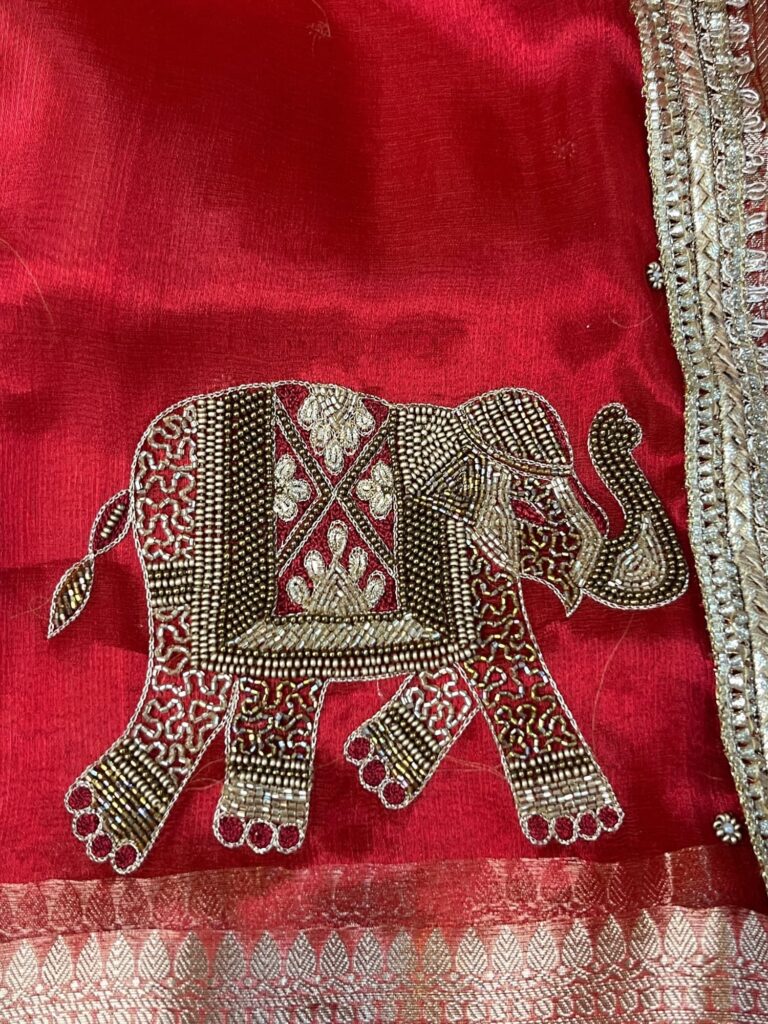
Process of Hand Embroidery on Sarees & The Intricate Art: Threaded with Legacy
Fast fashion may be fast, but hand embroidery? That’s slow, soulful, and stitched with generations of legacy.
Every hand-embroidered saree is more than fabric; it’s a living story woven with patience, precision, and pure love. In the age of digital prints and machine-made quick fixes, hand embroidery is a heartfelt reminder of craftsmanship that stands the test of time. Finishing Touches: Clean-Up, Polishing & Perfection
In this blog, we dive deep into the full process of hand embroidery on sarees, from canvas preparation to finishing touches. You’ll also learn about the variety of materials used, why it’s so labour-intensive, and what makes it an investment in heritage.
Step-by-Step: The Complete Process of Hand Embroidery
- Canvas Preparation: Mounting the Saree on the Adda
The journey begins once the saree is woven. Usually crafted in silk, organza, or georgette, the saree is mounted onto a traditional wooden frame known as an “Adda” or “Karchob”. This frame keeps the fabric stretched evenly to ensure smooth, tension-free embroidery.
Even mounting the saree requires skill. Too loose and the design distorts, too tight and the fabric may tear.
2. Designing & Transferring the Khaka (Stencil)
The embroidery design is first hand-drawn on butter or tracing paper to create a Khaka, the blueprint of the embroidery.
Using a needle or stylus, the design is pin-pricked along its outlines.
This stencil is placed over the stretched saree and chalk powder (or indigo powder) is pounced across the holes to transfer the design onto the fabric.
This ancient method offers precision and symmetry, making it ideal for motifs, borders, and butis.
3. Selecting the Raw Materials: Threads, Embellishments & More
Hand embroidery is so much more than just thread and needle. Each material is chosen carefully based on the saree’s fabric, weight, and aesthetic.
Commonly Used Hand Embroidery Materials:
| Material | |
| Zardozi | Coiled metallic wires in gold/silver for raised, regal motifs |
| Cutdana | Glass-cut beads that shimmer in light |
| Moti (Pearls) | Adds a classic, elegant touch to borders and butis |
| Sequins (Sitara) | Reflective discs for sparkle and festive glam |
| Dabka | Spring-like coiled wire, stitched into 3D patterns |
| Nakshi | Twisted, petal-shaped flatter version of dabka |
| Kasab | Flat metallic thread, ideal for lining and outlines |
| Resham | Pure silk threads for soft, flowing textures |
| Aari Thread | Used in hooked needle chain stitching |
| Beads & Stones | Add depth and drama to bridal wear and festive sarees |
Choosing the right combination of these materials is crucial. A heavy Banarasi saree can carry rich zardozi and dabka, while a light organza may need resham and pearls for elegance without weight.
4. Embroidery Begins: Stitching the Story
With the saree stretched and the design transferred, artisans begin the embroidery process. Usually seated cross-legged around the adda, each artisan works on specific parts (border, pallu, body motifs).
Popular Techniques:
- Zardozi: Royal and dimensional
- Aari: Fine chain stitch embroidery
- Pitta Work: Flat metal pressed into fabric
- French Knots & Satin Stitch: For Western-inspired softness
- Mirror Work: Adds ethnic vibrance
- Bead & Sequins Work: Great for bridal and festive sparkle
This stage is time-intensive. A single saree can take 15 days to 3 months to complete.
5. Finishing Touches: Clean-Up, Polishing & Perfection
Once the embroidery is done, the saree goes through several refining stages:
Backside Thread Removal: All extra threads at the back of the embroidery are neatly cut off for a cleaner finish and comfortable drape.
Polishing: The saree is gently polished using velvet or soft cloth to enhance shine and smoothness.
Surface Cleaning: Any rough sequins, sharp cutdana, or stray threads are filed, secured, or replaced to ensure no discomfort or damage.
Optional Steam Press or Starching: For sarees needing structure and sheen, a final light press or starch is applied.
This final step ensures your saree looks luxe, feels soft, and drapes like a dream.
Why Is Hand Embroidery So Expensive?
Because it’s worth it. You’re paying for:
Skilled Artisan Work: Passed down through generations
Time: 100 to 500+ hours of focused craftsmanship
Premium Materials: Real metallic threads, pearls, silk
No Automation: Every motif is done manually
Zero Waste Philosophy: Slow fashion at its finest
This isn’t mass production. It’s mindful creation.
The Beauty of Investing in Hand Embroidery
When you buy a hand-embroidered saree, you’re not just buying a garment:
You’re supporting Indian artisans and their families
You’re preserving centuries-old embroidery traditions
You’re choosing authenticity over algorithms
You’re wearing something that can be passed on as an heirloom
Fast fashion fades. Hand embroidery lives on……..in your wardrobe and your story.
Final Thread: Woven with History, Embroidered with Heart
From khaka to cutdana, from adda to elegance, a hand-embroidered saree is more than clothing. It’s a testimony of time, talent, and tradition.
So the next time someone asks why your saree costs more than their weekend haul, simply say:
“Because mine is crafted by hands that carry 500 years of heritage.”
#HandEmbroidery #ZardoziSaree #SlowFashionIndia #CutdanaChronicles #CraftedNotCopied #SupportLocalArtisans #WearYourHeritage #MantavyaBanaras #KhakaToKanchan #LegacyInEveryThread

